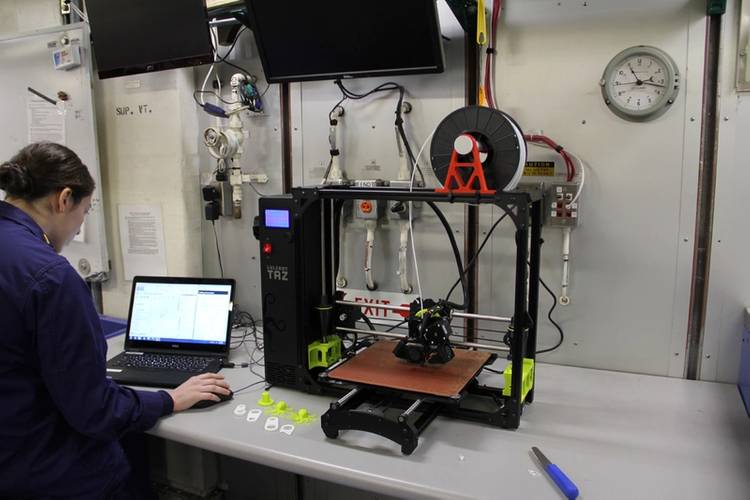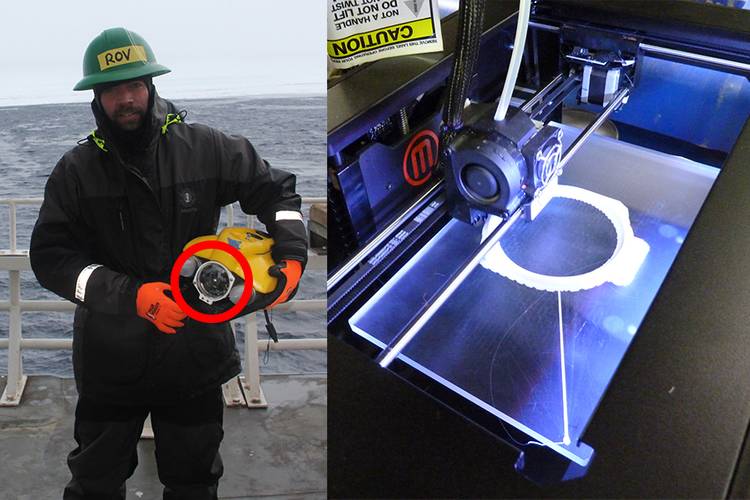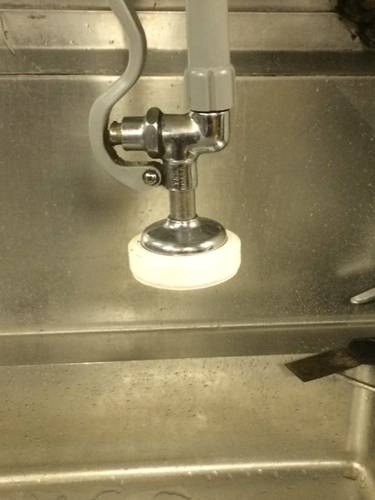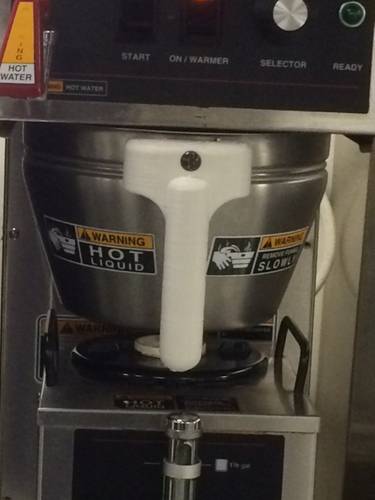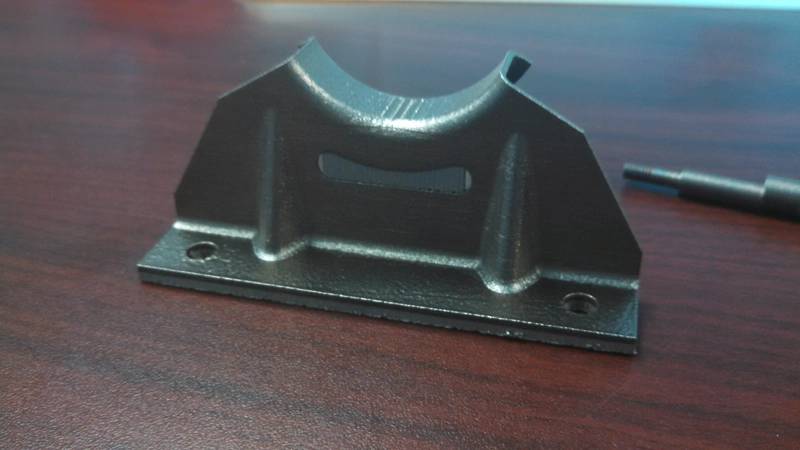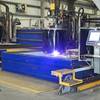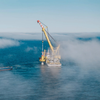For the average person, tracking down a spare part is often merely an annoyance. But for the crew of a Coast Guard cutter, the availability of spare parts can be important to mission completion or greatly affect their work environment.
The Coast Guard Research and Development Center in New London, Conn., is currently studying how the use of 3-D printing technology might improve mission readiness through logistical support. Now in the evaluation phase, 3-D printers are available for crew use on five Coast Guard cutters as well as at several operational shore units including Base New Orleans and the Surface Forces Logistics Center Engineering Services Division in Baltimore.
“This project presents an opportunity for operational units to innovate and design 3-D printed solutions to meet their needs, but to also explore the limitations and practical applications of additive manufacturing technologies,” said Lt. Steven Hager, Surface Domain lead with the Office of Research, Development, Test and Evaluation.
“Additive manufacturing or 3-D printing has potential to help smooth some of the logistics issues that the Coast Guard faces with its fleet,” said Jason Story, RDC project manager for the Evaluation of Three-Dimensional (3-D) Printing Technology for Coast Guard Applications. This research will help identify ways in which 3-D printing can best be implemented to provide maximum benefits to the Coast Guard.
“The U.S. Coast Guard continues to explore and look for ways to incorporate emerging technologies that fall under the umbrella of additive manufacturing such as 3-D printing into our efforts to sustain and support our aviation and surface fleets,” said Dennis Crimiel, deputy in the Office of Logistics (CG-44) and program sponsor representative. “RDC’s engagement with our military service partners and industry keeps us abreast of how this technology is being applied and used in tactical and operational logistics support operations.”
“I think the utility of the 3-D printer is the ability to print parts that are not normally kept onboard,” said Capt. Joseph Dugan, who is program manager for the National Security Cutter Program. “Sometimes those parts have lead times of weeks … maybe months, depending on the workload of the manufacturer.”
Additive manufacturing may also provide cost savings for the Coast Guard. With some of its legacy cutters, replacement parts can be difficult to find.
“Sometimes manufacturers no longer make the parts, and need to retool a production line in order to make us the part we need,” Dugan said. “This can be time-consuming, and very costly to the government.”
Crewmembers on Coast Guard Cutter Spencer (WMEC 905) were able to design and print a replacement for a hard-to-get switch for an important system on the 270-foot Medium Endurance Cutter for “pennies on the dollar,” Story said. Spencer was commissioned in 1986.
Operations in remote areas like the Arctic also provide logistical challenges that could be overcome with 3-D printing. Coast Guard Cutter Healy (WAGB-20) has additive manufacturing capabilities onboard, and RDC researchers including Story observed their use during the center’s just completed Arctic Technology Evaluation.
“The Healy is a natural fit for 3-D printing,” Story said. “Because of the geographical location in which it operates, getting spare parts can be difficult.”
The Healy is a 420-foot medium icebreaker commissioned in 2000 that is homeported in Seattle and operates mostly in the Arctic and Bering seas.
One of the earliest 3-D printing uses aboard a Coast Guard cutter was on Healy in 2013, when parts were needed to repair a remotely operated vehicle that was crushed in the ice. RDC researchers were able to successfully complete their project after replacement parts were printed.
On a subsequent Healy deployment in 2015, 3-D printing was used to fix the dishwasher, which broke while the icebreaker was underway.
“The crew had to eat off paper plates in the interim,” Story said. “Obviously, the ship wasn’t stocked for paper plates to be used during the whole deployment. A simple fix provided by a 3-D printer and an experienced operator can really help to improve morale when unexpected situations arise.”
Crewmembers on Coast Guard Cutter James (WMSL 754), a national security cutter, used additive manufacturing to print a handle for the ship’s coffee pot. How critical is a broken handle on a coffee pot? An NSC carries a crew of around 120 people on 60- to 90-day patrols, so the coffee pot is considered essential life support for some of the crew.
“Ships run on diesel and coffee,” joked Capt. Mark Fedor, James’ commanding officer. He called the handle and a new nozzle for the scullery hose “just the beginning … I could foresee pipe fittings, bolts, flanges, etc.”
The RDC has also used 3-D printing in the execution of some of its other projects, including creating mounts for sensors for an unmanned maritime system being tested in the Arctic and for prototype maritime object tracking technology, which could be used to track items jettisoned from suspect vessels during law enforcement pursuits.
For the evaluation phase, the RDC identified recent Coast Guard Academy graduates with computer-aided design backgrounds to serve as additive manufacturing liaisons for installation and training of operators.
“By using 3-D modeling software, operators are able to develop their own parts and print them as they are needed,” Story said.
In addition to printing replacement parts, many operators are designing new and innovative tools and components to help them do their job better.
For this initial evaluation of the technology, the RDC is focusing mainly on printers that are sized for a desktop and the use of polymers as the material. The polymers are wound on spools, “so the material is easy to store and transport,” Story explained. Future efforts will focus on more robust materials including metals.
The Aviation Logistics Center in Elizabeth City, N.C., has partnered with the Navy in a metal manufacturing application, in which the ALC designed the parts and the Navy printed them in metal. The results are still being tested in this application, Story said.
The project is also looking into options for recycling plastic to use in the printing of new parts. To accomplish this, the RDC developed a “paper-shredder” style of machine to grind the plastic and is integrating a shoe box-sized commercial-off-the-shelf machine to melt the plastic. “This could help to reduce waste on cutters by recycling some types of plastics into useful items,” Story said.
The next step in the project will be development of a “roadmap for wider integration of additive manufacturing into Coast Guard operations,” continued Story. “Or, charting the course forward for the use of 3-D printing.”
Before a wider application across the Coast Guard can be achieved, issues like training and quality assurance must be addressed.
“Quality control and establishing guidelines on what parts are good candidates for additive manufacturing are key,” Story explained.
“The RDC is often asked to provide roadmaps for new technologies to help the applicable program offices to see the possible applications, identify steps necessary to obtain the capability, and anticipate potential challenges to avoid along the way,” said Rich Hansen, Surface Branch chief at the RDC.
“RDC’s research and development efforts provide us with a window into future applications that hopefully will help us drive down costs in day-to-day maintenance and support operations as well as in distributive and deployed environments,” Crimiel said.
The Author
Loretta Haring, U.S. Coast Guard Office of Strategic Planning and Communication, Acquisition Directorate
(Source: Coast Guard Compass, official blog of the U.S. Coast Guard)








